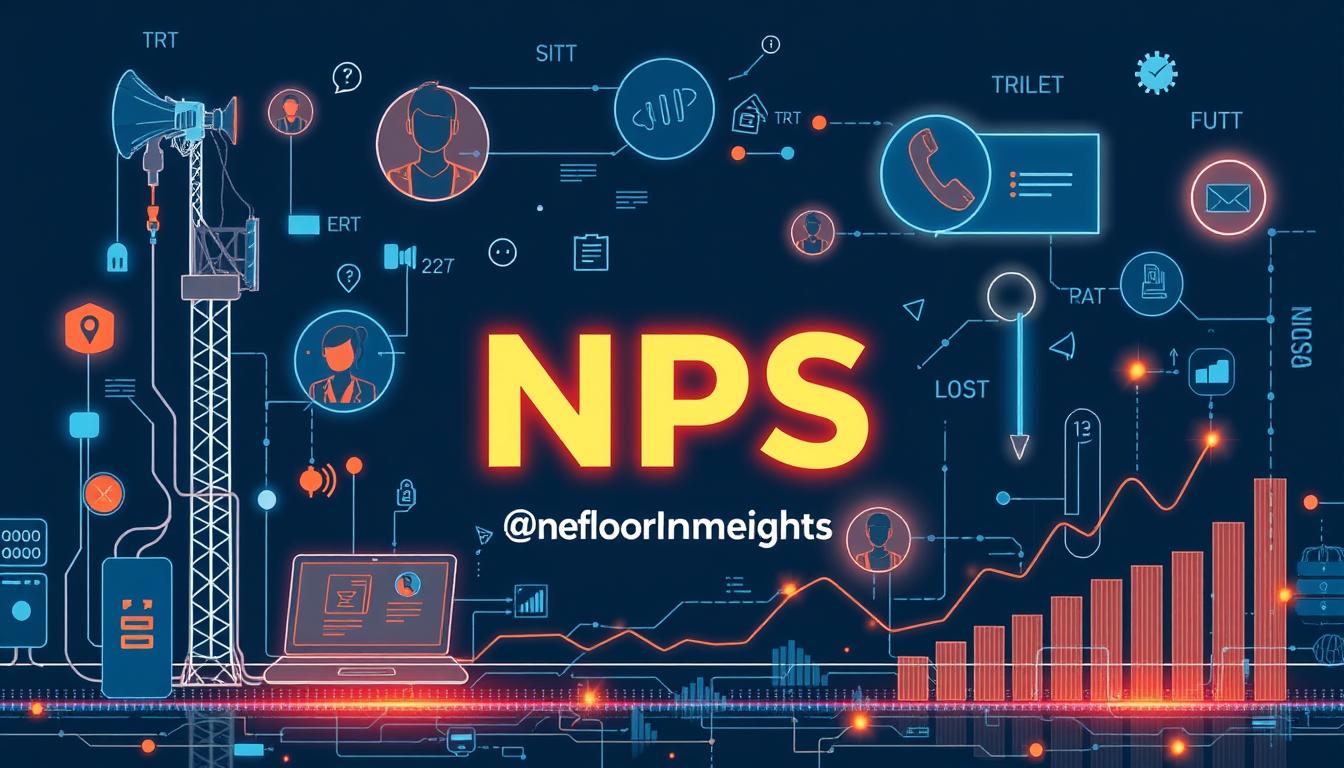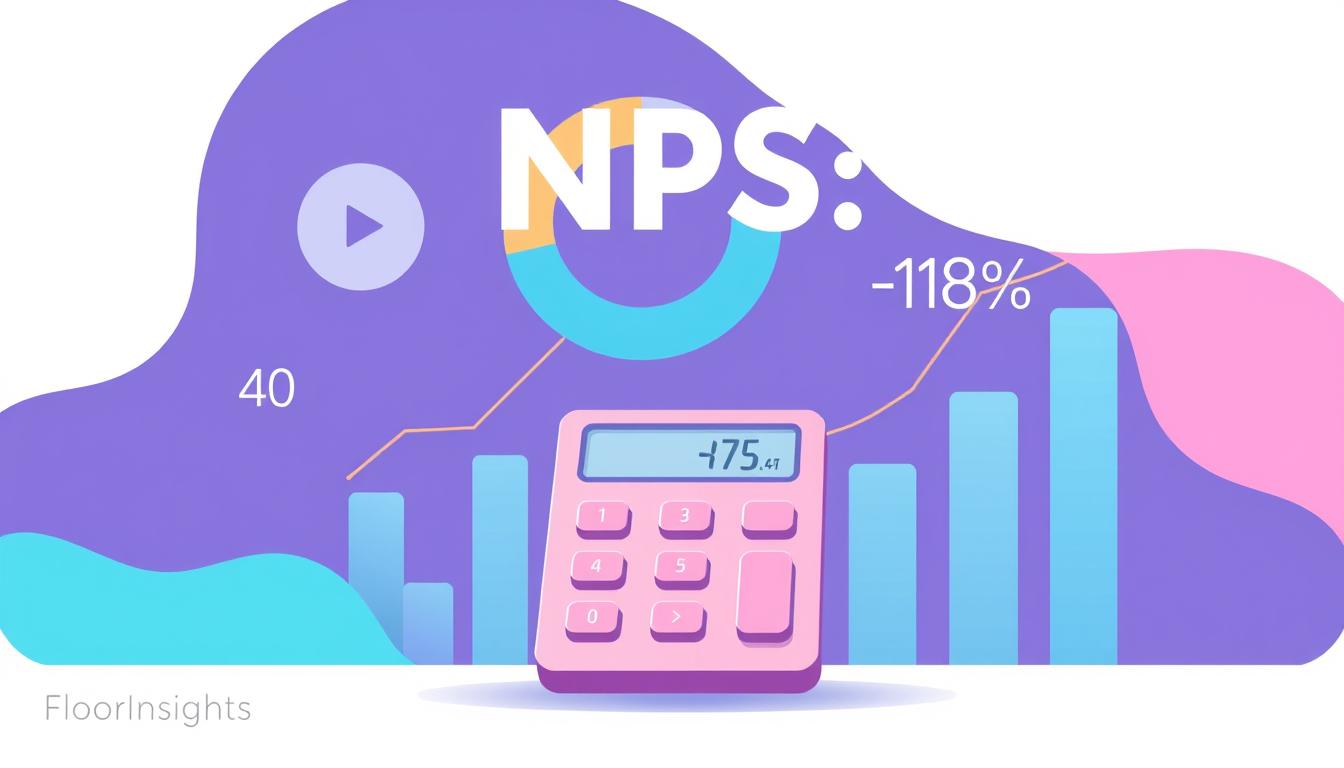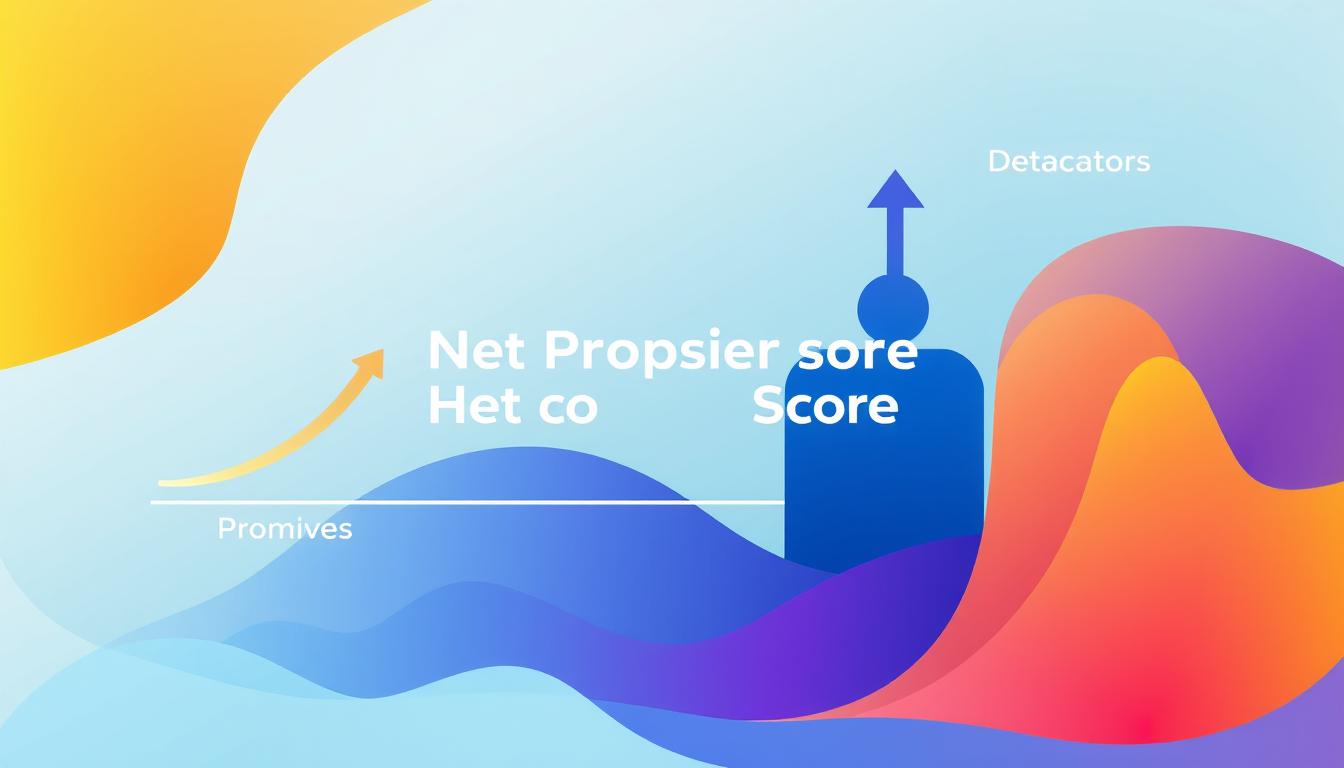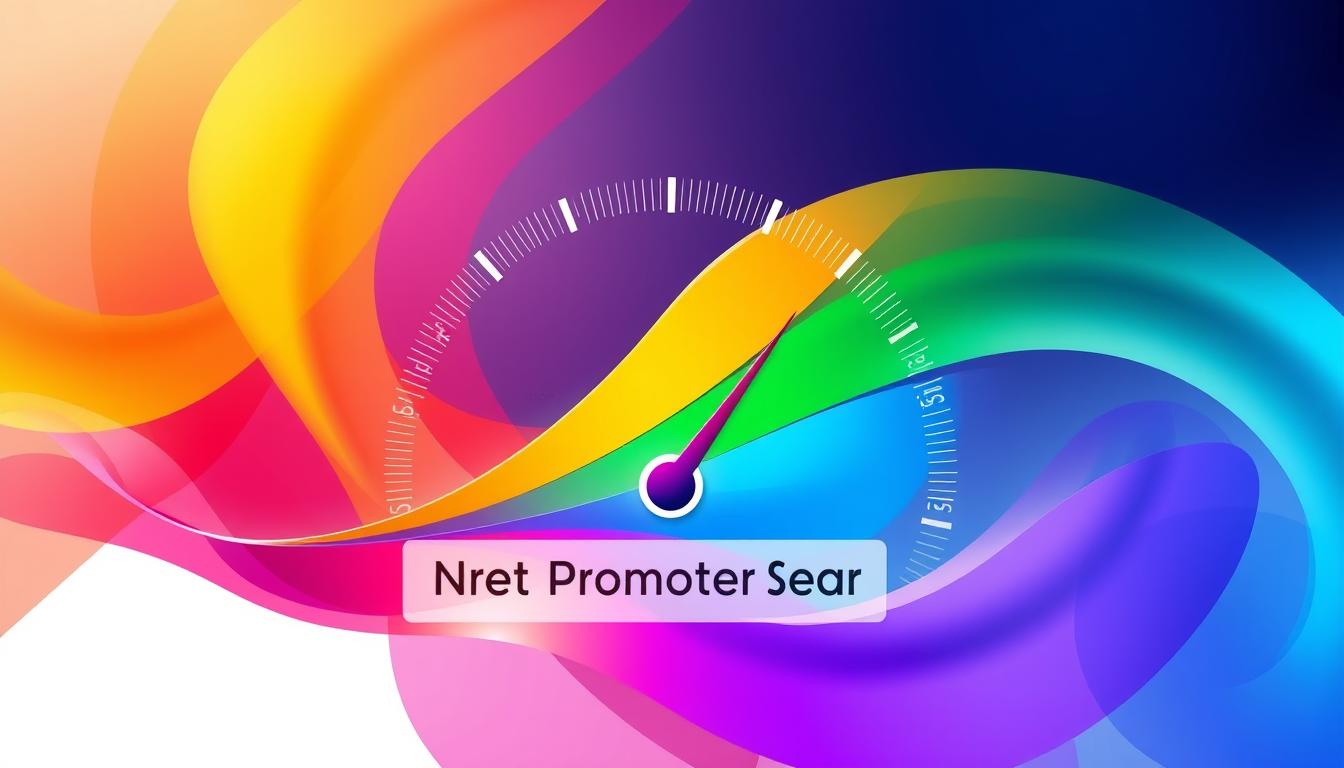In the fast-paced telecom industry, the Net Promoter Score (NPS) emerges as a pivotal measurement of customer loyalty and satisfaction. As we navigate the complexities of customer support in telecoms, it becomes increasingly crucial to understand how NPS influences our strategies. This article aims to illuminate the significance of the Net Promoter Score and its potential to redefine how we engage with our clients. Given the fierce competition and shifting consumer expectations in India, it is evident that focusing on effective customer support strategies is essential. By exploring foundational concepts of NPS, we set the stage for discussing actionable practices that can enhance customer interactions and overall satisfaction.
Key Takeaways
- Understanding NPS is crucial for assessing customer loyalty in telecoms.
- Effective customer support strategies are vital in enhancing client satisfaction.
- The competitive landscape of the telecom industry demands innovative approaches.
- Measuring customer feedback through NPS can drive improvements in service quality.
- Focus on NPS can lead to stronger client relationships and brand loyalty.
Understanding the Importance of Customer Support in Telecoms
In the telecommunications industry, customer support functions as a critical interface between service providers and their users. Our ability to effectively engage with customers significantly influences their decision to remain loyal to a brand. With competition intensifying, understanding how to deliver superior customer support becomes essential for enhancing customer satisfaction.
Statistics reveal that a notable percentage of consumers view quality customer support as a determining factor when selecting a telecom provider. This insight emphasizes that investing in efficient support services is not merely an option but a strategic necessity that shapes our overall brand perception.
To illustrate the relationship between customer support and user satisfaction, we can analyze trends surrounding customer satisfaction surveys. Such surveys not only gauge the effectiveness of our services but also provide valuable feedback that informs future improvements. A focus on comprehensive evaluation mechanisms will guide us in aligning our offerings with customer expectations, ultimately fostering brand loyalty in a competitive marketplace.
In conclusion, emphasizing robust customer support plays a crucial role in enhancing user satisfaction and ensuring our success in the telecommunications landscape. By prioritizing this area, we stand to gain both market share and customer loyalty, making a compelling case for strategic investments in support operations.
What is the Net Promoter Score?
The Net Promoter Score (NPS) serves as a vital tool for measuring customer loyalty and satisfaction. By classifying customers into promoters, passives, and detractors, organizations can gain clarity on their overall brand health. The NPS significance goes beyond mere numbers; it reflects the likelihood of users recommending our services, ultimately impacting our growth trajectory. Research consistently highlights that organizations boasting higher NPS scores experience accelerated growth compared to their competitors.
Definition and Significance
The Net Promoter Score offers insights into customer feedback, enabling businesses to understand sentiments surrounding their products and services. Through the classification of customers, we can identify areas for improvement and enhance customer relations. A strong NPS rating translates to loyal customers who advocate for our brand, key elements for long-term success in any competitive market.
How NPS is Calculated
The NPS calculation is straightforward, relying on a concise survey question: “On a scale from 0 to 10, how likely are you to recommend our service to a friend or colleague?” Based on their ratings, customers fall into three categories:
- Promoters (scores of 9 to 10)
- Passives (scores of 7 to 8)
- Detractors (scores of 0 to 6)
To derive the NPS, we subtract the percentage of detractors from the percentage of promoters. This streamlined method enables organizations to utilize a Net Promoter Score survey template that standardizes data collection and enhances reliability during assessments.
| Category | Score Range | Description |
|---|---|---|
| Promoters | 9-10 | Loyal customers who actively recommend the brand |
| Passives | 7-8 | Customers who are satisfied but unenthusiastic |
| Detractors | 0-6 | Unhappy customers who may discourage others |
The Connection Between NPS and Customer Satisfaction
Understanding the NPS relationship with customer satisfaction gives us crucial insights into our customer base. A high Net Promoter Score typically indicates that our customers are satisfied, signaling their likelihood to recommend our services to others. This correlation emphasizes the importance of maintaining positive relationships with customers.
When we analyze lower NPS scores, we often find detractors. These customers express their dissatisfaction, highlighting areas where we need to improve. Addressing their concerns can lead to increased customer satisfaction and loyalty. We must recognize that fostering a strong client satisfaction survey process can significantly contribute to understanding customer sentiments and improving service quality.
By implementing comprehensive client satisfaction surveys, we gather valuable qualitative and quantitative data. These insights help us identify common pain points among customers, ultimately guiding our efforts to enhance their overall experience. The continual feedback loop from these surveys supports our commitment to increasing customer satisfaction and refining their interactions with us.
| NPS Score Range | Customer Sentiment | Action Items |
|---|---|---|
| 9 – 10 | Highly Satisfied | Encourage referrals and testimonials |
| 7 – 8 | Satisfied | Request feedback for improvements |
| 0 – 6 | Dissatisfied | Identify and address issues |
Key Factors Influencing Customer Support in the Telecom Industry
Understanding the dynamics of customer support in the telecom sector requires a focus on essential factors such as response time and resolution rates. Effective customer support strategies hinge on how quickly we respond to inquiries and how efficiently we resolve issues. This connection has direct implications on customer satisfaction surveys, allowing us to identify areas needing improvement.
Response Time and Resolution Rates
The response time to customer queries serves as a critical metric in determining overall customer satisfaction. Industry benchmarks indicate that faster response times correlate with higher levels of customer contentment. Our teams prioritize swift engagement to enhance resolution rates. Rapidly addressing concerns fosters a sense of reliability and trust among our clients.
Utilizing tools such as the customer service feedback form plays a vital role in monitoring our performance. By collecting data on response times and resolution effectiveness, we can adapt our strategies accordingly. Regular analysis of these insights leads to improved operational capabilities and higher customer satisfaction.
Communication Channels
We recognize the significance of various communication channels in delivering exceptional customer support. These channels include phone, email, live chat, and social media, each contributing uniquely to customer experiences. Understanding which channels our clients prefer is essential for tailoring our outreach efforts.
Optimizing the use of these platforms enables us to align our customer support strategies with client expectations. By evaluating customer engagement across each channel, we can enhance our service delivery, ensuring a more personalized experience that resonates with our target audience.
Implementing Effective Customer Satisfaction Surveys
Understanding customer satisfaction is vital for improving our services. To achieve this, we must implement effective customer satisfaction surveys to gauge customer perceptions. Different types of surveys can offer unique insights. These include post-contact surveys that seek immediate feedback and annual satisfaction surveys that provide a broader overview of customer sentiment.
Types of Surveys to Consider
Each survey type serves a specific purpose. For instance:
- Post-contact surveys: These are conducted after customer interactions to assess immediate satisfaction.
- Annual satisfaction surveys: A comprehensive approach, gathering insights over a longer period.
- Questionnaire for retail store customers: Tailored to in-store experiences, helping us understand customer needs directly.
Best Practices for Designing Surveys
Employing best practices for surveys significantly enhances the quality of feedback. We recommend using a customer satisfaction template, which streamlines the design process and focuses on key areas. Effective surveys should include:
- Clarity of questions: Avoid ambiguity to ensure respondents understand the questions.
- Multiple-choice formats: Simplify responses to encourage participation and improve completion rates.
- Anonymity: Ensuring anonymity can lead to more honest feedback.
Utilizing customer feedback examples allows us to see how well-designed questionnaires can drive engagement and provide actionable insights. Following these strategies will enable us to refine our approach and better serve our customers.
Utilizing the Net Promoter Score to Improve Customer Support
Utilizing NPS effectively empowers telecom companies to enhance their customer support significantly. By analyzing Net Promoter Score metrics, we can identify customer sentiment and behavior, allowing us to address concerns proactively. This data serves as a crucial tool in discerning patterns that highlight strengths and identify areas needing attention.
For instance, we can track trends over time, correlating NPS data with specific support interactions. This correlation reveals valuable insights, guiding our efforts to improve customer support. Understanding what drives customer loyalty and dissatisfaction enables us to refine our strategies strategically.

Several telecom companies have effectively harnessed the power of NPS data. By integrating customer feedback directly into their operational processes, they have been able to improve customer support consistently. These organizations prioritize listening to their customers, translating insights from NPS into actionable improvements.
Furthermore, tracking the impact of changes made based on NPS data ensures transparency and accountability within our teams. By setting specific metrics and goals tied to customer feedback, we foster an environment dedicated to continuous improvement. In doing so, we enhance not only our customer support strategies but also the overall customer experience.
Strategies for Enhancing Customer Experience in Telecoms
In the telecom industry, the ability to enhance customer experience significantly impacts overall success. This requires a strategic focus on both empowering support teams and utilizing advanced technology. By implementing effective training programs and incorporating customer service technology, we can foster a culture of excellence in customer support.
Training and Empowering Support Teams
Comprehensive training for customer support teams is essential for improving customer support. Equipping our teams with both soft skills and technical expertise enables them to address customer inquiries effectively. We should consider the following strategies:
- Regular workshops on communication skills and conflict resolution.
- Access to resources for ongoing education, focusing on industry trends and customer service strategies.
- Encouraging a culture of accountability, where team members feel responsible for their interactions with customers.
Leveraging Technology for Better Support
Technology is a powerful ally in enhancing customer experience. By leveraging technology, telecom companies can optimize their support processes and improve customer communication. Key technological solutions include:
- Chatbots that offer 24/7 assistance and immediate responses to common queries.
- Customer Relationship Management (CRM) systems that provide detailed insights into customer preferences and history.
- AI-driven analytics to assess customer feedback and adapt support strategies accordingly.
Challenges in Measuring Customer Satisfaction in Telecoms
In the telecom industry, measuring customer satisfaction presents unique challenges that can impede our ability to gather actionable insights. We encounter various obstacles that hinder the effectiveness of customer satisfaction data, affecting our understanding of customer needs and preferences.
One of the primary difficulties lies in data collection. Our methods often face hurdles in accessing complete and accurate data due to fragmented systems and multiple customer touchpoints. These inconsistencies complicate the process of measuring customer satisfaction, providing us with only partial insights.
The variability of customer interactions across different channels contributes to these telecom industry challenges. Customers may experience our services through call centers, online chat, social media, or in-person locations. This diversity leads to inconsistent experiences, making it difficult to gauge overall satisfaction levels accurately.
We also need to prioritize the necessity for continuous improvement. With rapidly evolving customer expectations, staying ahead in measuring customer satisfaction can feel overwhelming. The shifting landscape of consumer behavior demands constant adaptation, which complicates our efforts to capture reliable customer satisfaction data.
Recognizing these challenges allows us to develop strategic approaches. By identifying potential gaps and implementing more robust measurement methodologies, we can enhance our ability to respond to customer needs and ultimately improve customer satisfaction across the board.
| Challenge | Impact | Potential Solution |
|---|---|---|
| Data Collection Difficulties | Incomplete and inaccurate customer data | Integrate unified systems for centralized data access |
| Variability in Customer Touchpoints | Inconsistent customer experiences | Standardize service procedures across channels |
| Requirement for Continuous Improvement | Difficulty adapting to changing customer expectations | Regularly update measurement strategies and training |
Customer Feedback Forms: Gathering Insights for Improvement
Customer feedback forms serve as powerful tools for gathering insights crucial for our service enhancement. By utilizing an effective feedback form, we can ensure that we receive valuable input from our customers, leading to continuous improvement in our telecom offerings. Understanding the essential elements of these forms allows us to create better systems for collecting and analyzing customer opinions.
Essential Elements of an Effective Feedback Form
To maximize the efficiency of our customer feedback forms, we should focus on several key components:
- Concise Questions: Clear and straightforward questions lead to more accurate responses. Complex wording can confuse customers and result in ineffective data.
- Intuitive Design: A user-friendly layout encourages completion. A well-structured form should guide users seamlessly through the feedback process.
- Clear Objectives: Each form should have a specific aim. Defining what we wish to learn helps in framing the questions appropriately.
Implementing these elements improves our chances of gathering actionable insights, allowing us to refine our services and enhance customer satisfaction. We can examine various customer feedback examples from prominent telecom companies, showcasing how they employed feedback forms effectively to achieve outstanding results. These case studies illustrate the significant impact that well-designed forms have on refining product offerings and customer service strategies.
| Telecom Company | Feedback Form Element | Result |
|---|---|---|
| Vodafone | Concise Questions | Increased response rate by 25% |
| Airtel | Intuitive Design | Reduced form abandonment by 30% |
| Jio | Clear Objectives | Improved customer satisfaction ratings by 15% |
Case Studies: Successful NPS Implementation in Telecoms
In the competitive landscape of telecommunications, integrating the Net Promoter Score (NPS) offers valuable insights into customer loyalty and satisfaction. We can examine several notable telecom industry examples that illustrate the successful implementation of NPS to bolster customer support strategies.
One significant case study comes from Vodafone India. By adopting an NPS framework, they identified critical areas for improvement within their customer service operations. This resulted in a 15% increase in overall customer satisfaction scores over two years. Engaging with customers through tailored follow-up surveys allowed them to address specific issues promptly, demonstrating a clear commitment to enhancing their service.
Another compelling example lies with Airtel. Their successful implementation of NPS involved a focus on post-interaction surveys to gauge customer sentiment. The data collected led to targeted training for support agents and a more streamlined process for handling complaints. As a result, Airtel reported a notable uplift in their NPS scores, showcasing a direct correlation between employee engagement and customer satisfaction.
We can also look at the experience of Jio, which utilized NPS as a pivotal tool in enhancing customer communication strategies. Tracking customer feedback helped them refine their service offerings and proactively address customer needs. The reflection of an improved NPS in their quarterly reports evidenced a strengthened brand loyalty that resonated with users across their network.
These NPS case studies provide robust insights for other telecom companies striving for similar successful implementations. By analyzing these real-world experiences, we gain a clearer understanding of how NPS can foster genuine relationships with customers, ultimately driving brand loyalty and growth.
Future Trends in Customer Support and NPS
The telecom industry is on the brink of transformation, driven by future trends in customer support and the integration of advanced technology in telecoms. We anticipate significant changes as artificial intelligence and machine learning reshape how we interact with customers. These innovations enhance efficiency, allowing us to provide tailored experiences.
As we embrace big data analytics, our ability to understand customer behavior improves dramatically. This capability supports proactive service approaches, enabling telecom firms to anticipate customer needs. By adapting our strategies, we can effectively meet the evolving expectations of our clientele.
Self-service options are likely to increase, encouraging customers to resolve issues independently. This shift not only empowers them but also reduces strain on customer support teams. Emphasizing technology in telecoms, we can streamline operations while maintaining high levels of customer satisfaction.
| Future Trends | Impact on Customer Support | Technology Involved |
|---|---|---|
| AI and Machine Learning | Personalized customer experiences | Chatbots, Predictive analytics |
| Big Data Analytics | Proactive service and insights | Data mining, Customer segmentation |
| Self-Service Solutions | Reduced response times | Knowledge bases, Mobile apps |
| Omnichannel Support | Seamless customer interactions | Unified communication tools |
Incorporating these future trends into our customer support framework not only enhances operational effectiveness but also reinforces our commitment to delivering exceptional service. The evolving landscape challenges us to rethink traditional approaches while focusing on innovation and adaptability. As we progress, ensuring a customer-centric model remains a pivotal priority for our success in the telecommunications sector.
Conclusion
In conclusion, we have examined how the Net Promoter Score can play a pivotal role in enhancing customer support strategies within the telecom sector in India. By delving into the intricacies of this powerful metric, we understand that fostering customer satisfaction and loyalty hinges on our ability to effectively implement feedback mechanisms and act upon the insights gathered.
Throughout this article, we’ve emphasized the significance of understanding customer needs and the criticality of their feedback. By prioritizing effective customer support, we can identify areas for improvement and adapt our approaches accordingly. This ongoing commitment can drive positive outcomes, paving the way for sustained success in an ever-evolving industry.
Ultimately, embracing the principles of the Net Promoter Score enables us to refine our customer support strategies, ensuring that we remain responsive to the voices of our customers. This forward-thinking approach will not only help us excel in the competitive telecom landscape, but also strengthen our relationships with customers for long-term growth and resilience.
FAQ
What is the Net Promoter Score (NPS) and why is it important in telecommunications?
The Net Promoter Score (NPS) is a key metric used to measure customer loyalty and satisfaction by categorizing customers as promoters, passives, or detractors. In telecommunications, NPS is important because it provides insights into customer experiences and can significantly influence company growth and retention strategies.
How can we implement effective customer satisfaction surveys in our telecom business?
To implement effective customer satisfaction surveys, we should consider various types such as post-contact surveys and annual satisfaction surveys. Employing comprehensive customer satisfaction survey templates can streamline data collection and enhance the quality of insights gathered.
What role does customer support play in enhancing customer experiences in the telecom industry?
Customer support is crucial in the telecom industry as it directly impacts customer satisfaction and retention. We must prioritize quick response times and effective issue resolution while also utilizing various communication channels to meet customer preferences and enhance their overall experience.
What are some best practices for designing customer satisfaction surveys?
Best practices for designing customer satisfaction surveys include ensuring clarity in questions, utilizing multiple-choice formats to ease response, and guaranteeing respondent anonymity. Incorporating feedback examples can also help in structuring questions that engage customers effectively.
How can customer feedback forms be used to improve services in telecom?
Customer feedback forms gather vital insights that can drive improvements in services. Essential elements of an effective feedback form including concise questions and intuitive design help us understand customer pain points, leading to targeted enhancements in our offerings.
What challenges do telecom companies face when measuring customer satisfaction?
Telecom companies encounter challenges such as data collection difficulties, diverse customer touchpoints, and the need for consistent improvement in measurement strategies. Acknowledging these barriers enables us to develop proactive approaches to effectively gauge customer satisfaction.
How can we leverage technology to enhance our customer support efforts?
Leveraging technology involves utilizing tools like customer relationship management (CRM) systems, AI-driven analytics, and chatbots to optimize service efficiency. These technologies help in streamlining support processes, improving communication, and ultimately enhancing customer experiences.
Are there specific questionnaire formats recommended for retail store customers?
Yes, for retail store customers, it is advisable to use targeted questionnaire formats that include a mix of quantitative and qualitative questions to gather comprehensive insights about their shopping experience. Utilizing customer satisfaction templates can help standardize this process.
What are some examples of successful NPS implementation in the telecom sector?
Successful NPS implementation can be seen in case studies from notable telecom companies that have integrated the metric into their customer support strategies. These implementations often showcase measurable improvements in customer satisfaction and loyalty, providing a strong framework for others to follow.
Related Posts
- How to Create Real-Time Feedback Loops with NPS Data – NPS and Customer Feedback Loops
- Linking NPS to Customer Journey Touchpoints – NPS and Customer Journey
- How NPS Influences the Overall Customer Experience
- Using NPS to Drive CRM-Driven Customer Retention Programs – NPS in Customer Relationship Management






